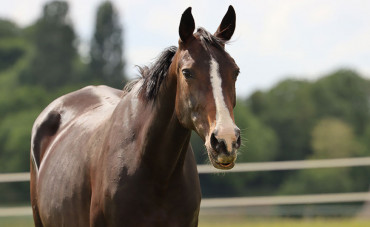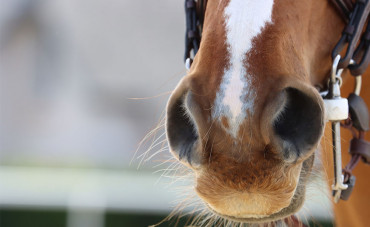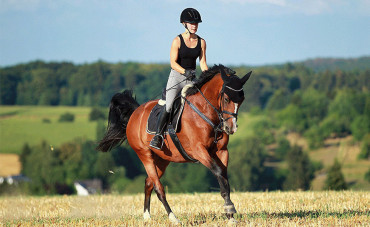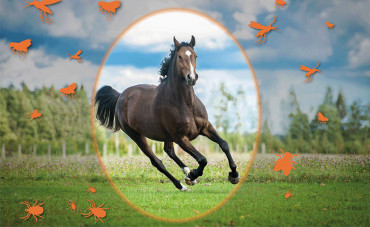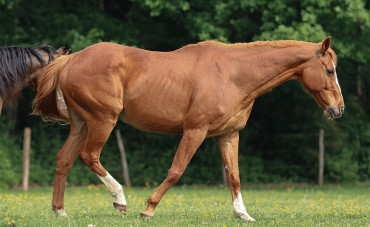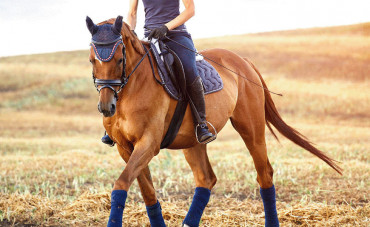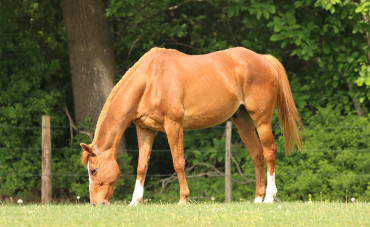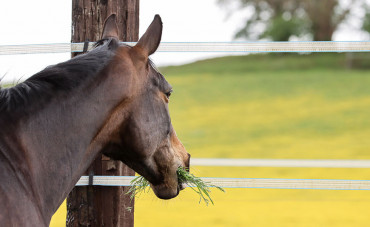Your horse is a herbivore, but do you know how its digestion works? Read on to find out more as we take a closer look at the three key organs: the stomach, the small intestine and the large intestine.
This week, we’re focusing on the stomach.
How does your horse’s stomach work?
The stomach represents around 8% of your horse’s total digestive system, and its volume varies from 8 to 15 L (around the capacity of the bucket you feed your horse from).
The stomach is divided into two parts:
- The glandular part: the “bottom” of the stomach is where gastric acids are produced. This is an area where the walls are relatively well protected from multiple aggressions.
- The squamous part: the “top” of the stomach is more sensitive to various disturbances but does not produce gastric acid.
Throughout the day (and night), whether or not your horse is eating, it will produce secretions—from 25 to 50 L per day. These secretions are highly acidic and are responsible for the start of the digestive process.
In effect, the stomach produces so-called “enzymatic” digestion: in other words, small molecules (enzymes) will digest concentrates. Forage is not digested in the stomach.
No nutrients are absorbed at this stage.
Food recommendations for your horse
Dietary practices play a role in the good health of the stomach; here are the main dietary recommendations to keep your horse in top form.
- Limit quantities of starch per meal
During the digestion of concentrates within the stomach, the enzymes that break down starch will produce acid. With a small intake of starch, this acidity will not cause any problems. However, with meals high in starch, this high concentration of acid may lead to problems like gastric ulcers.
- Limit large meals of concentrates
In the mouth, your horse will salivate to moisten foods, but this saliva also plays a buffering role in the stomach. To help you understand, imagine that you’re drinking lemon juice. If you wanted to make it weaker, you would add water—here, water is playing the role of a buffer.
Saliva therefore acts as a buffer. However, the quantities produced vary hugely between different types of food. As such, for every 1 kg of hay eaten, your horse will produce 4 L of saliva, versus just 1 L of saliva produced per 1 kg of pellets.
With a large meal of pellets, the stomach will therefore fill up significantly and the “level” of acid will therefore increase and may reach the unprotected area. This will then be exposed to high acidity (more so if the concentrate is high in starch), resulting in gastric ulcers.
- Give forage before grains
We often hear that forage pushes pellets towards the exit. In reality, when your horse’s stomach is full, it will automatically empty. If hay is given after grains, it will fill the stomach and cause it to empty before the pellets have been digested. On the other hand, if pellets are given after hay, the hay will be emptied first, giving the pellets time to be digested.
As well as wasting pellets that won’t be properly digested and taken advantage of, in a future article we will discuss the consequences that this can have on the small intestine and, in turn, the large intestine.
- Avoid leaving horses to fast for too long
If your horse is left to fast for a long time, it will produce gastric acid which will not be used, which may cause damage to the stomach lining and result in gastric ulcers. As such, it’s recommended that your horse always has hay available, even at night, as your horse doesn’t just eat during the day.
Extra tips for your horse’s nutrition
In addition to nutritional recommendations, a few tricks can help limit discomfort in your horse’s stomach:
- Avoid working your horse just after a grain-based meal. In this case, the food bolus present in the stomach will be “tossed around”, which may irritate the horse and also weaken the unprotected upper part of the stomach.
- Limit stress: it has been proven that stress is a factor that increases the risk of ulcers in the stomach.
- If your horse suffers gastric discomfort, you can offer it food supplements like Ekygard+ which will support the stomach and limit any disturbances.
This has been the first part of our series—keep an eye out for the next edition, where we’ll be taking a look at the small intestine.

